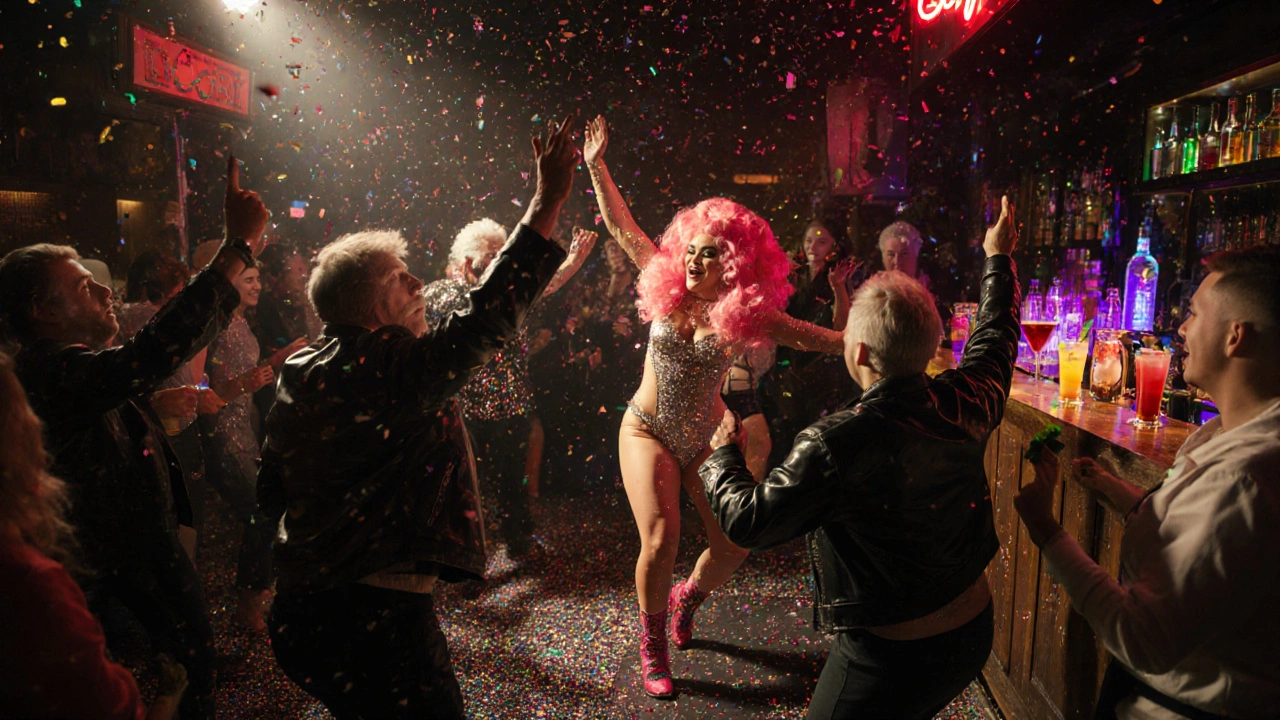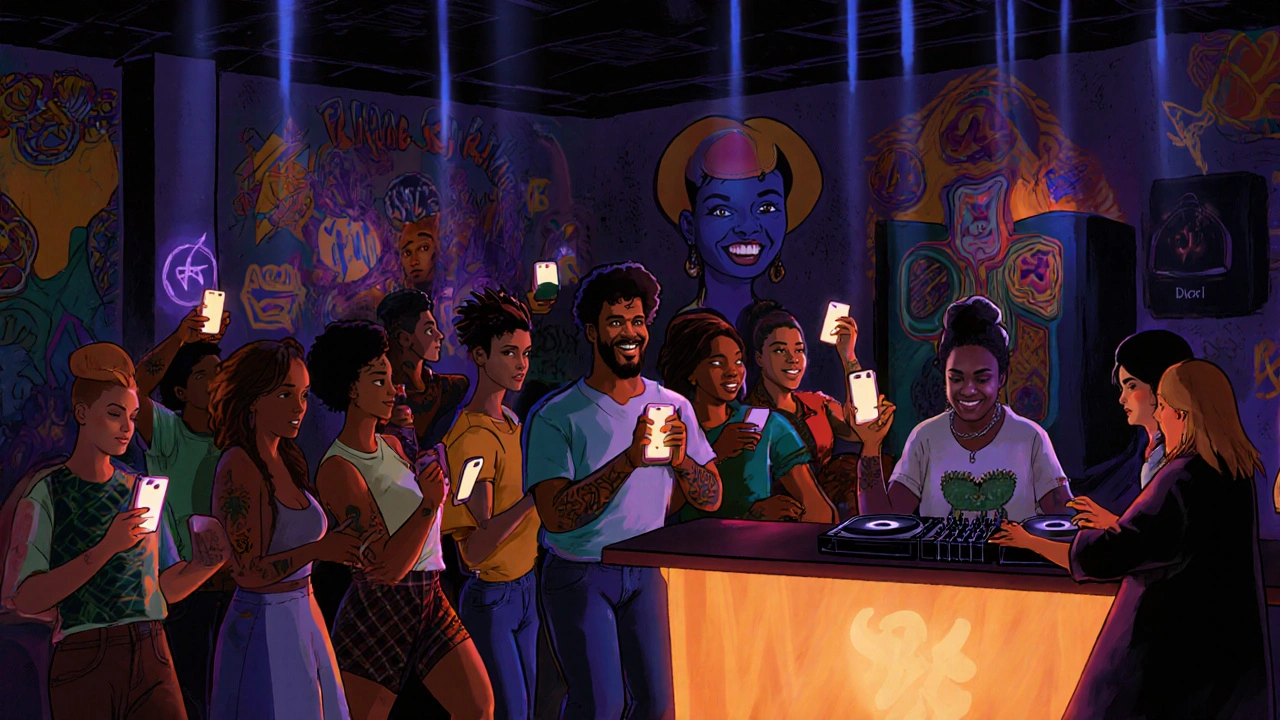
So you’ve been to Soho. You’ve danced under the neon lights of the classic queer pubs, sipped cocktails in the packed backrooms, and maybe even got caught in the midnight crowd spilling onto Old Compton Street. But if you think that’s all there is to queer nightlife in London, you’re missing half the story. The real magic? It’s not in Soho anymore. It’s in the warehouses of Hackney, the basement clubs of Peckham, the tucked-away pubs of Lewisham, and the rooftop parties in Brixton. This isn’t about replacing Soho-it’s about expanding it. Queer London doesn’t live in one neighborhood. It lives everywhere people show up as themselves.
East London: Where the Underground Still Breathes
Hackney is where queer nightlife went when it outgrew the rent prices of Soho. The scene here isn’t polished. It’s raw. It’s loud. It’s made by the people who run it. Wicked Queer at The Glory is the oldest running queer night in East London-and still the most electric. Every Friday, the bar turns into a glitter-drenched dancefloor where drag kings battle it out with DJs spinning everything from punk to house. You’ll find students in thrifted leather jackets, retirees in sequins, and a whole lot of people who don’t care if you’re new here-they’ll pull you into the circle before the first song ends.
Down the road, Club Kali in Dalston is where the queer POC community owns the night. It’s not a venue you’ll find on mainstream event listings. You hear about it through word of mouth, Instagram DMs, or a friend who whispered, “Go on Thursday.” The music? Afrobeat fused with bass-heavy electronic. The vibe? Unapologetic. The door policy? No bouncers checking IDs. Just a smile and a nod. It’s the kind of space where you don’t need to explain yourself. You just show up.
For something quieter but just as meaningful, try Bar 186 in Shoreditch. It’s a tiny, unmarked spot behind a bookshop. No sign. Just a red door. Inside, it’s dim, cozy, and full of poets, DJs, and artists who meet for open mic nights and queer zine swaps. No dancefloor. No cover charge. Just conversations that last until 3 a.m. and the smell of incense clinging to your coat.
South London: Queer Roots, Wild Energy
If East London is the heartbeat, South London is the pulse. Brixton has always been a cultural crossroads, and its queer scene is no different. Stag isn’t just a bar-it’s a community hub. Run by a collective of trans and non-binary folks, it hosts weekly bingo nights, drag brunches, and queer film screenings. The drinks are cheap, the staff remembers your name, and the bathroom has a gender-neutral sign that’s been there since 2020. It’s the kind of place where someone will hand you a free shot because you looked like you needed it.
Just a ten-minute walk away, The Prince of Wales on Brixton Road is a pub that looks like it hasn’t changed since the ’90s. But inside? It’s one of the most diverse queer spaces in the city. You’ll find Black lesbians laughing over cider, gay men debating football, and trans teens playing pool like they own the place. The jukebox? A mix of 90s R&B, grime, and Madonna. The vibe? Like walking into your coolest aunt’s living room-except everyone’s dancing.
Peckham’s Clapham Junction (yes, it’s in Peckham, not Clapham) is the secret weapon of South London’s queer scene. It’s a converted warehouse with a backyard that turns into a dancefloor under string lights. The nights here are themed: “Twerk Tuesdays,” “Drag Karaoke Sundays,” “Lesbian Disco.” The crowd? 70% queer, 30% curious allies who leave as friends. The music? No playlists. Just a rotating cast of local DJs who know exactly when to drop the bass.

What Makes These Places Different from Soho?
Soho is tourist-friendly. It’s safe. It’s visible. But visibility doesn’t always mean belonging. In East and South London, queer nightlife isn’t curated for outsiders. It’s built by the community-for the community. There’s no corporate sponsorship. No VIP lists. No $20 cocktails. The money stays local. The art stays local. The people stay local.
These venues don’t need to advertise on Instagram ads. They don’t need to be in travel guides. They thrive because they’re real. A trans woman runs the soundboard at Club Kali. A non-binary artist paints the murals at The Prince of Wales. A group of friends started Bar 186 because they couldn’t find a space where they could talk about gender without being interrupted.
And here’s the truth: you don’t have to be queer to enjoy these spaces. But you do have to be respectful. That means listening more than talking. Asking before you touch someone’s hair or clothes. Not taking selfies in the middle of a drag performance. And never assuming someone’s identity just because they’re wearing glitter.
How to Find the Next Night Out
Forget the big event apps. The best queer nights in East and South London aren’t on Ticketmaster. They’re on Instagram. Follow these accounts:
- @wickedqueer (The Glory, Hackney)
- @clubkali.london (Dalston)
- @stagg.brixton (Brixton)
- @claphamjunctionlondon (Peckham)
- @bar186london (Shoreditch)
They post last-minute updates, guest DJs, and surprise pop-ups. Some nights, the event is just a WhatsApp group link. You join. You show up. You’re in.
Also, check out Queer London Events, a community-run newsletter that drops every Wednesday. It’s free. No ads. Just a list of what’s happening that weekend-no corporate sponsors, no paid promotions. Just real people sharing real nights.

When You Go: What to Bring
- Cash. A lot of these places don’t take cards.
- Comfortable shoes. You’ll be dancing, walking, or standing for hours.
- An open mind. You might hear a language you don’t understand. You might see a style you’ve never seen before. That’s the point.
- A friend. Not because you need one-but because these spaces are better shared.
Leave the expectations at the door. Don’t go looking for the “best” club. Go looking for the one that feels like home-even if you’ve never been there before.
Why This Matters Now
In 2025, queer spaces are under pressure. Rent is rising. Closures are common. Soho’s iconic venues are turning into luxury lofts. But in East and South London, the scene is growing-not because it’s trendy, but because it’s necessary. These places are where queer youth find their first community. Where elders keep the history alive. Where people who were rejected at home find a second family.
When you support these spaces, you’re not just going out. You’re helping keep a movement alive.
Are these venues safe for newcomers?
Yes. Most of these spaces have a strong culture of mutual care. Staff and regulars look out for each other. If you look unsure, someone will ask if you’re okay. There’s no gatekeeping-just warmth. But like anywhere, trust your gut. If something feels off, leave. And if you’re ever unsure, ask a staff member-they’re usually happy to guide you.
Do I need to be LGBTQ+ to go?
No. But you need to be respectful. These aren’t tourist attractions-they’re homes. Don’t treat them like photo ops. Don’t dominate conversations. Don’t assume everyone’s like you. Be quiet. Listen. Dance. Leave space for others to be seen.
What’s the dress code?
There isn’t one. Wear what makes you feel like you. Some nights, people show up in full drag. Others, it’s just jeans and a band tee. The only rule? No hate symbols. No offensive slogans. Everything else? Go wild.
Are these places wheelchair accessible?
Most are, but not all. Stag and The Prince of Wales have step-free access. Club Kali and Bar 186 have limited access-call ahead. Clapham Junction has a ramp and accessible bathrooms. Always check the venue’s Instagram or email them before you go. The community will tell you the truth.
Is there parking nearby?
Forget parking. These areas are best reached by public transport. Tube, Overground, and buses run late on weekends. Use Citymapper or Google Maps to plan your route. If you’re driving, park at least 15 minutes away and walk. It’s safer, cheaper, and way less stressful.
If you’re looking for more places like this, check out queer nights in New Cross, Woolwich, and Croydon. The scene is spreading. And it’s only getting louder.